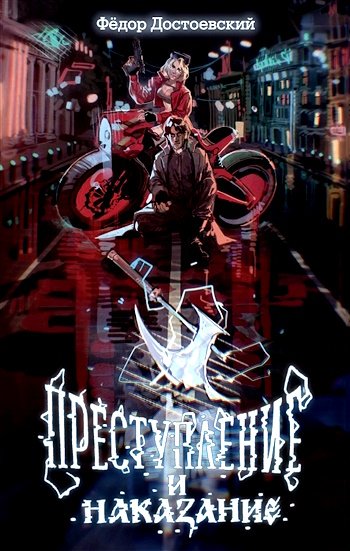5. Gerd Gemünden, Framed Visions: Popular Culture, Americanization, and the Contemporary German and Austrian Imagination (Ann Arbor: University of Michigan Press, 1998), 20.
6. For extensive discussions of Syberberg’s Our Hitler see Anton Kaes, From Hitler to Heimat: The Return of History as Film (Cambridge, Mass.: Harvard University Press, 1989), 37 –72; and Eric L. Santner, Stranded Objects: Mourning, Memory, and Film in Postwar Germany (Ithaca, N.Y.: Cornell University Press, 1990), 103 –149.
7. Thomas Elsaesser, Fassbinder’ s Germany: History, Identity, Subject (Amsterdam: Amsterdam University Press, 1996), 153 –154.
8. Hans Jürgen Syberberg, Hitler, ein Film aus Deutschland (Reinbek: Rowohlt, 1978), 15.
9. Max Horkheimer and Theodor W. Adorno, Dialectic of Enlightenment, trans. John Cumming (New York: Continuum, 1995), 163. For one of the best readings of Adorno’s exilic position in America see Nico Israel, “Adorno, Los Angeles, and the Dislocation of Culture,” Outlandish: Writing between Exile and Diaspora (Stanford: Stanford University Press, 2000), 75–122.
10. Peter Uwe Hohendahl, Prismatic Thought: Theodor W. Adorno (Lincoln: University of Nebraska Press, 1995), 119.
11. For an extended discussion of this critique see Lutz Koepnick, Walter Benjamin and the Aesthetics of Power (Lincoln: University of Nebraska Press, 1999), 53 – 82.
12. Thomas Schatz, The Genius of the System: Hollywood Filmmaking in the Studio Era (New York: Pantheon Books, 1988), 12.
13. Max Pensky, “Minimal Adorno,” New German Critique 75 (fall 1998): 190.
14. Theodor Adorno, In Search of Wagner, trans. Rodney Livingstone (London: New Left Books, 1981).
15. Hohendahl, Prismatic Thought, 141. See also Andreas Huyssen,
“Adorno in Reverse: From Hollywood to Richard Wagner,” in After the Great Divide: Modernism, Mass Culture, Postmodernism, by Andreas Huyssen (Bloomington: Indiana University Press, 1986), 16 – 43.
10-C2205-END 8/17/02 3:39 PM Page 275
Notes to Pages 10 –24
/
275
16. Jürgen Habermas, “Was ist ein Volk? Zum politischen Selbstverständ-nis der Geisteswissenschaften im Vormärz,” in Die postnationale Konstellation: Politische Essays (Frankfurt /M.: Suhrkamp, 1998), 13 – 46.
17. Pamela M. Potter, Most German of the Arts: Musicology and Society from the Weimar Republic to the End of Hitler’ s Reich (New Haven, Conn.: Yale University Press, 1998), ix. See also David B. Dennis, Beethoven in German Politics, 1870 –1989 (New Haven, Conn.: Yale University Press, 1996), 1–31.
18. Qtd. in Felix Moeller, Der Filmminister: Goebbels und der Film im Dritten Reich (Berlin: Henschel, 1998), 60.
19. Horkheimer and Adorno, Dialectic of Enlightenment, 164.
20. According to Lotte Eisner, e.g., the figure of the doppelgänger encoded Weimar cinema’s romantic attraction toward the obscure and undetermined. It transformed external history into meaningful inwardness, accidental forms into transcendental visions. According to Thomas Elsaesser, by contrast, the many doubles of the Weimar era displaced fundamental anxieties about social reality into the fantastic: Weimar film artists embraced the figure of the double so as to articulate what they considered a dramatic loss of control over the modes of mass cultural production and consumption. See Lotte H. Eisner, The Haunted Screen: Expressionism in the German Cinema and the Influence of Max Reinhardt (Berkeley: University of California Press, 1994); and Thomas Elsaesser,
“Social Mobility and the Fantastic,” Wide Angle 5, no. 2 (1982): 14 –25.
21. Elsaesser, Weimar Cinema and After, 380.
22. Theodor W. Adorno, Minima Moralia: Reflections from Damaged Life, trans. E. F. N. Jephcott (London: New Left Books, 1951), 33.
23. Edward W. Said, Representations of the Intellectual (New York: Vintage Books, 1996), 49.
24. Gerd Gemünden, “Space Out of Joint: Ernst Lubitsch’s To Be or Not to Be, ” New German Critique (forthcoming).
25. David Bordwell, The History of Film Style (Cambridge, Mass.: Harvard University Press, 1997), 12 – 45.
26. Hannah Arendt, “The Nature of Totalitarianism,” unpublished lecture, 1954, qtd. in Elisabeth Young-Bruehl, Hannah Arendt: For Love of the World (New Haven, Conn.: Yale University Press, 1982), 203.
27. Leslie Epstein, Pandaemonium (New York: St. Martin’s Griffin, 1997), 98 –99.
c h a p t e r 1 . s o u n d s o f s i l e n c e 1. Felix Moeller, Der Filmminister: Goebbels und der Film im Dritten Reich (Berlin: Henschel, 1998).
2. Russell A. Berman, foreword to Reproductions of Banality: Fascism, Literature, and French Intellectual Life, by Alice Yaeger Kaplan (Minneapolis: University of Minnesota Press, 1986), xi–xxiii.
3. Steve Neale, “Triumph of the Will: Notes on Documentary and Spec-
10-C2205-END 8/17/02 3:39 PM Page 276
276
/
Notes to Pages 24 –26
tacle,” Screen 20, no. 1 (1979): 63 – 86; and Linda Schulte-Sasse, Entertaining the Third Reich: Illusions of Wholeness in Nazi Cinema (Durham, N.C.: Duke University Press, 1996) .
4. Karsten Witte, “Politik als Nebenhandlung: Zu einer Theorie des faschisti-schen Films,” Politik und Kultur 2, no. 9 (1982): 32 – 41.
5. Georg Seeßlen, Tanz den Adolf Hitler: Faschismus in der populären Kultur (Berlin: Edition Tiamat, 1994), 14 –20.
6. Walter Murch, foreword to Audio-Vision: Sound on Screen, by Michel Chion, ed. and trans. Claudia Gorbman (New York: Columbia University Press, 1994), xi.

























